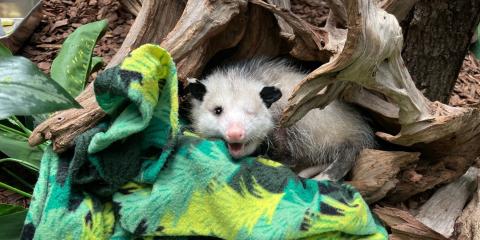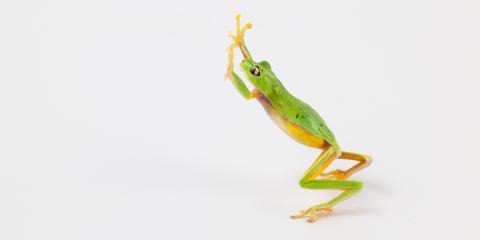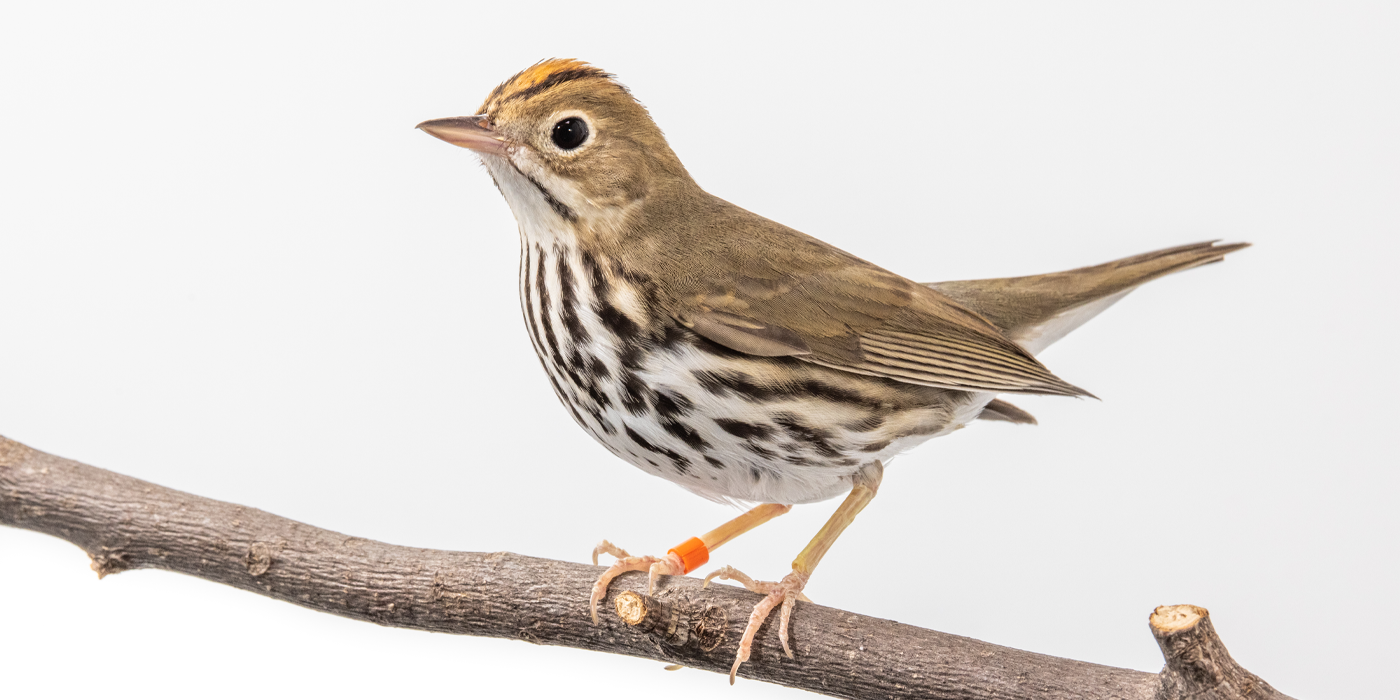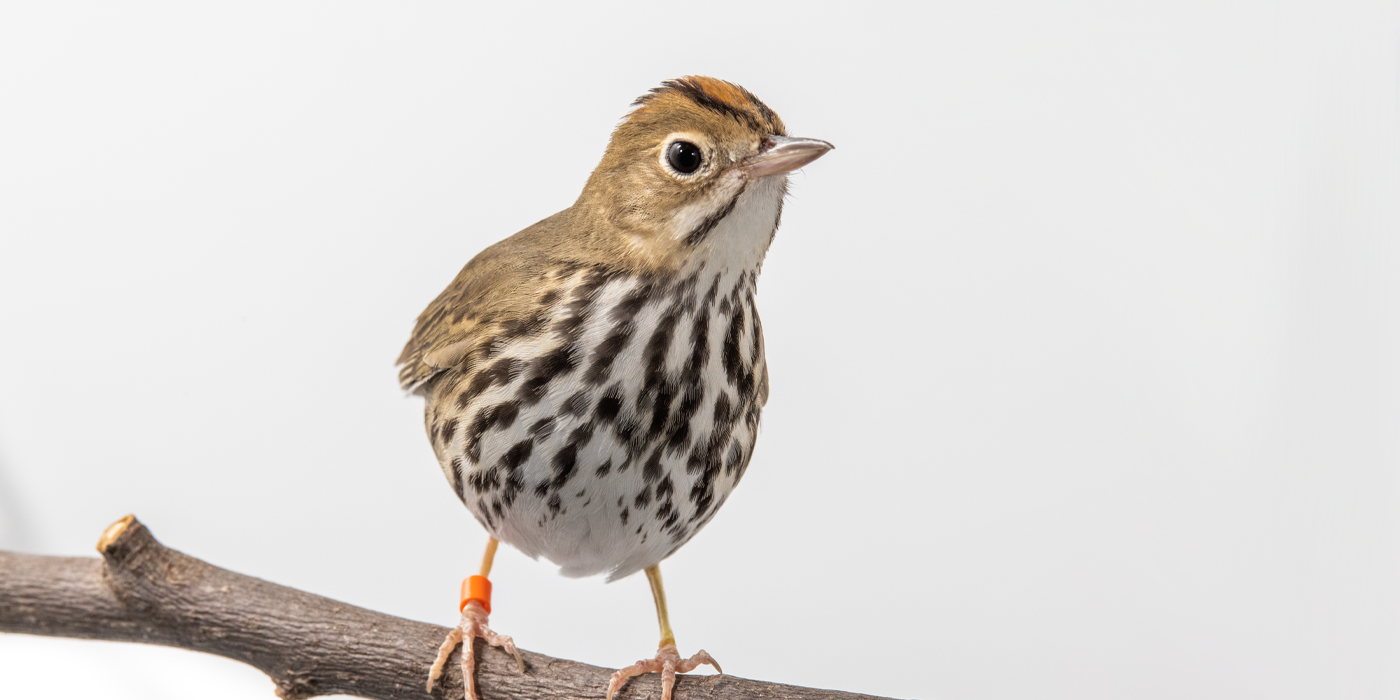Physical Description
A small, somewhat chunky warbler, adult ovenbirds are noted for their olive-brown heads, necks, and backs, with a bold white ring around the eyes and a line of orange that runs down their heads flanked by a pair of black streaks. They have white underparts with black streaks on the chest, similar to the wood thrush, with a short tail and long pink legs. Males and females have similar color patterns.
Size
Adults are about 4.3-5.5 inches (11-14 centimeters) long, with a wingspan of 7.5-10.2 inches (19-26 centimeters).
Native Habitat
Their favorite breeding grounds are closed-canopy forests, ideally with lots of dead leaves on the forest floor.
Its breeding range stretches across Canada and the eastern and central United States. Its wintering range includes the Caribbean, Central and South America and parts of the southeastern U.S.
Lifespan
Up to 11 years, but most live one to three years in the wild.
Communication
Ovenbirds have a loud, repeating song that builds in volume. This chur-tee call is used by males during the breeding season, although both males and females can make several other calls and chirping noises.
Food/Eating Habits
Ovenbirds eat mostly insects but will forage for seeds and occasionally fruit. When hunting on the forest floor, they use their long legs to walk around, bobbing around with big, jerky steps as they hunt for prey.
Sleep Habits
Ovenbirds are active during the day and sleep at nighttime.
Social Structure
Males and females pair up during the breeding season.
Reproduction and Development
Ovenbirds depart from their wintering grounds in early spring, arriving in their breeding grounds throughout April and May. Males will sing to attract females. After the males and females pair up, the female will build a nest on the ground, woven from dead leaves, grass, twigs, and animal hair, resembling a dome with a hole on the side. Females lay clutches of between three and six eggs, colored white with brown spots, which hatch after about two weeks of incubation.
Hatchlings are cared for by both females and males. After seven to 10 days’ worth of feeding, the young ovenbirds will leave the nest for the first time. However, they cannot fly, and will need to fed by their parents for another few weeks until they are ready to venture out on their own.
Help this Species
- Be a smart consumer. Choose products made with sustainable ingredients, such as Smithsonian certified Bird Friendly coffees, which support farmers striving to limit their impact on wildlife and habitat.
- Be a responsible cat owner, and keep cats indoors or under restraint when outside. Never release animals that have been kept as pets into the wild.
- Support organizations like the Smithsonian’s National Zoo and Conservation Biology Institute that research better ways to protect and care for this animal and other endangered species. Consider donating your time, money or goods.
- Conservation starts with you! Join a citizen science project, such as FrogWatch or Neighborhood Nestwatch, where you can help collect valuable data for scientists. Encourage your friends and family to get involved too.
- Plant native flowers in your garden to help feed resident and migrating pollinators. You'll make your lawn beautiful and help wildlife at the same time!
Animal News

Remembering Basil, Our Virginia Opossum



